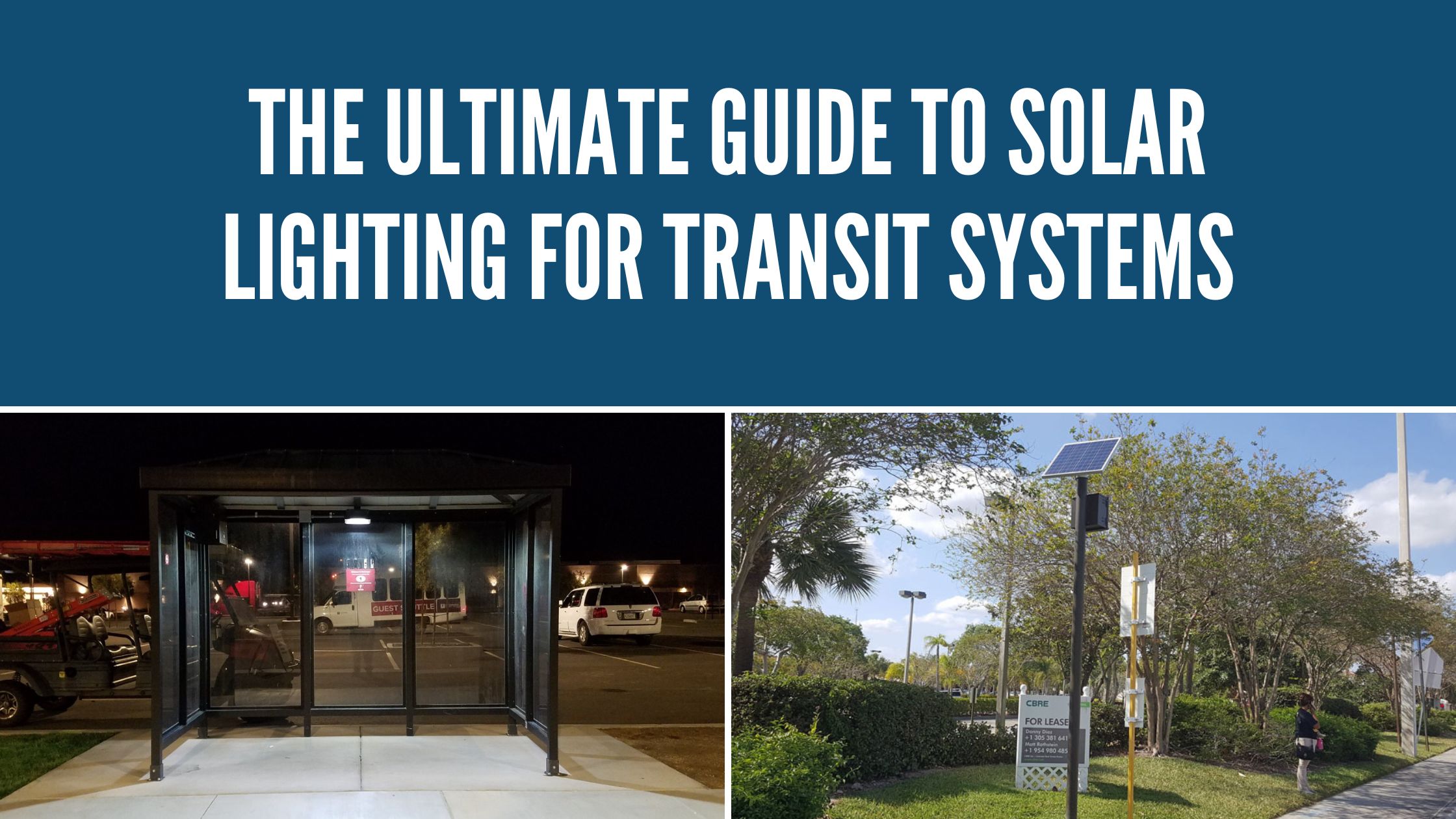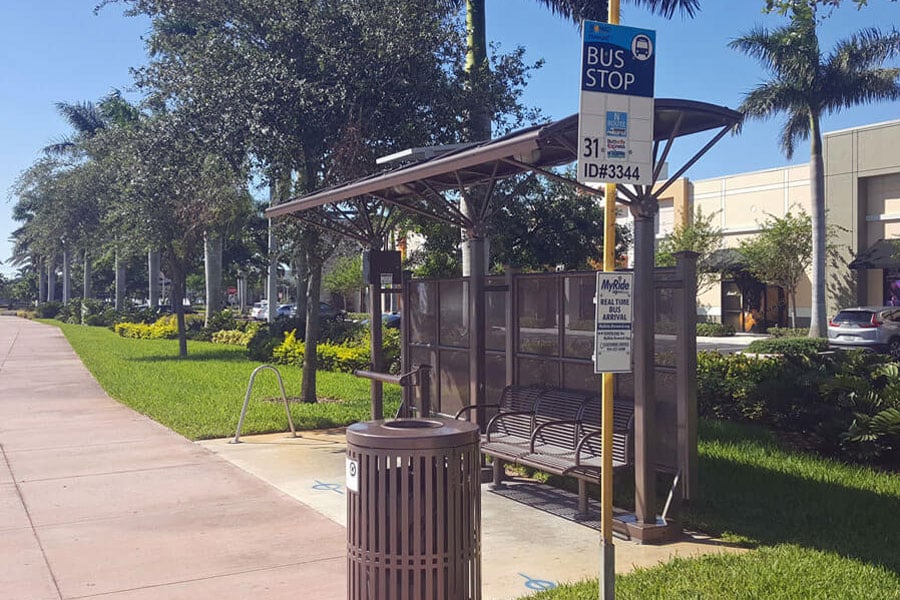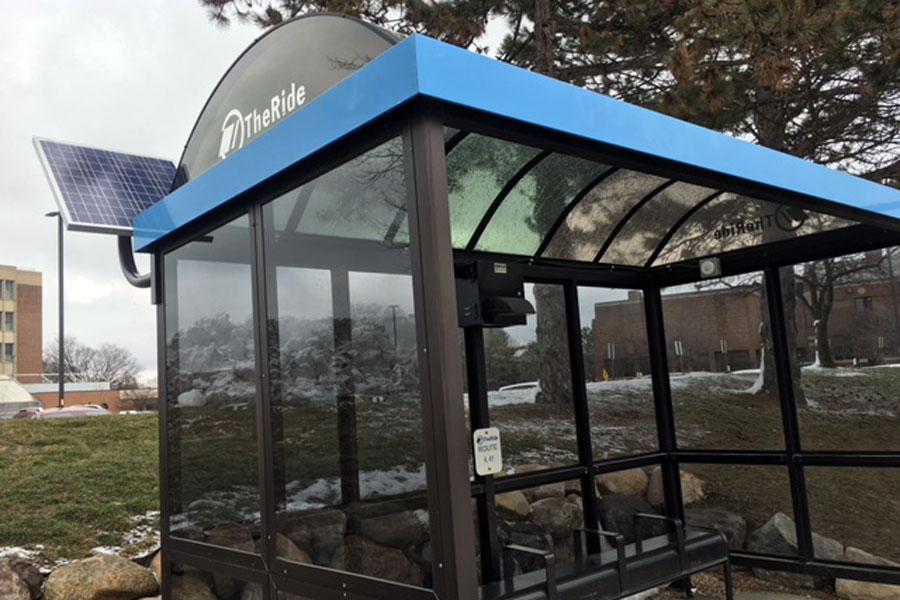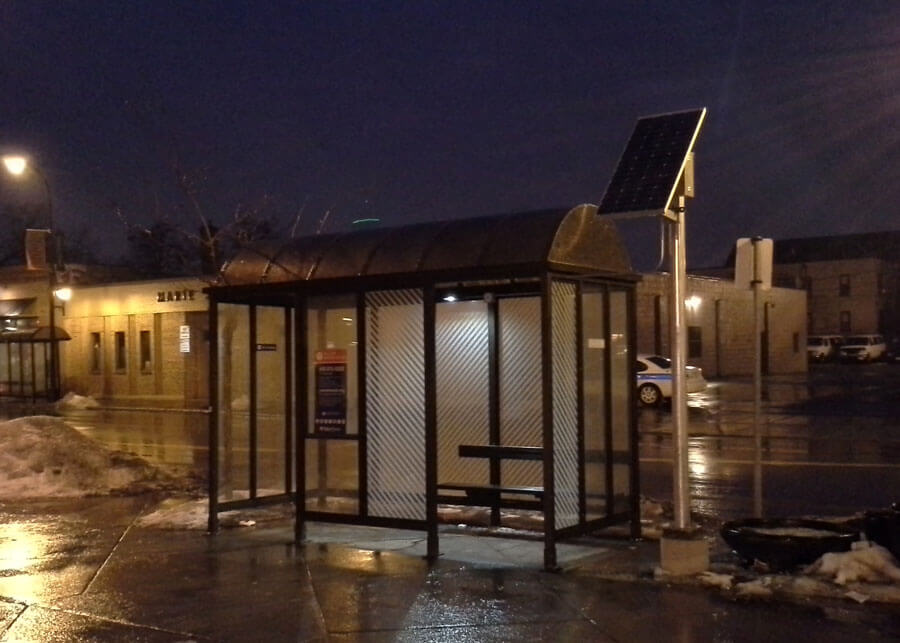The Ultimate Guide to Solar Lighting for Transit Systems

Contents
As transit companies, cities, and municipalities strive to provide safe and secure public transportation options, adequate lighting plays a crucial role in ensuring passenger comfort and promoting overall community well-being. In this comprehensive guide, we will explore the numerous benefits of solar lighting systems specifically designed for transit systems.
We will delve into why transit systems require adequate lighting, how solar lighting solutions can address these needs effectively, and the key distinctions between bus shelters and bus stop solar lighting systems. Additionally, we will address the challenges posed by snowy climates and shading, emphasizing the importance of careful solar panel placement.
Let's illuminate the path to safer and more secure transit experiences!
The Importance of Adequate Lighting for Transit Systems
Public transit systems serve as lifelines for communities, enabling people to move conveniently and efficiently. One critical aspect of maintaining a safe and secure transit experience is ensuring that bus stops and shelters are well-lit. Let's explore why adequate lighting is vital for transit systems:
1. Enhancing passenger safety and security:
Well-lit bus stops and shelters create an environment where passengers feel safe and protected. Adequate lighting reduces the risk of accidents, slips, and falls, particularly during nighttime or in poorly lit areas. It also discourages criminal activities by increasing visibility and deterring potential offenders.
2. Deterrence of criminal activities and vandalism:
Proper lighting serves as a deterrent to criminal activities such as theft, vandalism, and harassment. Well-illuminated areas minimize hiding spots, making it less attractive for criminals to target transit stations. Bright lighting also enhances surveillance capabilities, allowing security personnel and CCTV cameras to monitor the surroundings effectively.
3. Improving visibility for drivers and pedestrians:
Clear visibility is essential for both drivers and pedestrians around bus stops and shelters. Well-lit transit areas ensure that drivers can easily identify stops and safely maneuver buses, reducing the risk of accidents. Pedestrians benefit from improved visibility, making it easier for them to navigate around transit stations, cross streets, and board buses safely.
- Boosting passenger confidence and ridership:
Lighting plays a vital role in creating a positive perception of public transportation. Well-illuminated bus stops and shelters instill confidence in passengers, particularly during evening hours, encouraging them to use public transit. Increased ridership contributes to a more sustainable and efficient transportation system.
By prioritizing adequate lighting, transit systems demonstrate their commitment to passenger safety, security, and overall community well-being. The next section will explore how solar lighting systems can effectively address these lighting needs while providing additional benefits for transit systems.

How Solar Lighting Systems Benefit Transit Systems
Solar lighting systems offer a range of benefits specifically tailored to the needs of transit systems. By harnessing the power of the sun, these systems provide reliable, energy-efficient, and cost-effective lighting solutions for bus stops and shelters. Let's explore the advantages of integrating solar lighting into transit systems:
1. Energy-efficient and eco-friendly lighting solutions:
Solar lighting systems utilize renewable energy from the sun, eliminating the need for grid electricity. By reducing dependency on traditional power sources, transit systems can significantly lower their carbon footprint and contribute to a greener environment. Solar lighting also helps cities and municipalities meet sustainability goals and demonstrate environmental leadership.
2. Elimination of expensive electrical infrastructure:
Installing traditional electrical infrastructure for lighting at every bus stop or shelter can be costly and time-consuming. Solar lighting eliminates the need for extensive wiring and electrical connections, resulting in significant cost savings during installation. The absence of utility bills further reduces operational expenses, allowing transit systems to allocate resources more efficiently.
3. Cost-effective installation and maintenance:
Solar lighting systems are designed for easy installation and minimal disruption to transit operations. They can be quickly deployed at various locations without extensive construction work or the need for trenching. Moreover, maintenance requirements are minimal since solar lights are typically self-contained units with long-lasting LED bulbs. This translates to reduced maintenance costs and fewer service disruptions.
4. Flexible placement options for optimal lighting coverage:
Solar lighting systems provide flexibility in terms of placement, allowing transit systems to optimize lighting coverage. With no dependency on electrical infrastructure, bus stops, and shelters can be located in areas where traditional lighting would be challenging or expensive to install. This flexibility enhances safety and ensures well-lit transit areas throughout the entire network.
5. Minimal disruption to transit operations during installation:
Installing solar lighting systems at bus stops and shelters can be done with minimal disruption to transit operations. Unlike traditional lighting installations that may require road closures or service interruptions, solar lights can be quickly and efficiently installed without disrupting the regular flow of buses and passengers. This ensures a seamless transition to improved lighting without inconveniencing transit users.
6. Reliable lighting during power outages:
Solar lighting systems incorporate battery storage, ensuring continuous illumination even during power outages. This feature is particularly valuable in emergency situations or areas with unreliable grid power. By maintaining lighting functionality during outages, SolarTransit lighting systems contribute to passenger safety and provide a sense of security in challenging circumstances.
Incorporating solar lighting systems into transit systems offers numerous benefits, ranging from energy efficiency and cost savings to flexible installation options and reliable performance. In the next section, we will explore the distinctions between bus shelters and bus stop solar lighting systems to provide tailored lighting solutions for transit infrastructure.

Understanding Bus Shelter and Bus Stop Solar Lighting Systems
Transit systems can maximize the benefits of solar lighting by implementing solutions specifically designed for bus shelters and bus stops. Let's explore the key features and advantages of each type of solar lighting system:
1. Bus Shelter Lighting Systems:
Bus shelter lighting systems are designed to provide illumination within passenger waiting areas. These systems offer several benefits:
- Illumination for passenger waiting areas: Solar lights integrated into bus shelters provide a well-lit environment for passengers, enhancing visibility and ensuring their safety while waiting for buses.
- Integrated seating and advertising options: Bus shelter lighting systems often incorporate seating areas and advertising panels. This combination enhances passenger comfort and allows for additional revenue generation through advertising partnerships.
- Smart lighting controls for energy optimization: Advanced bus shelter lighting systems can be equipped with smart controls, such as motion sensors or timers, to optimize energy usage. These controls adjust lighting levels based on passenger presence or time of day, ensuring efficient operation.
- Customizable designs to match transit system aesthetics: Bus shelter solar lighting systems offer design flexibility to align with the overall aesthetics of the transit system. Customizable options allow for the integration of transit system colors, enhancing visual coherence and identity.
2. Bus Stop Lighting Systems:
Bus stop lighting systems focus on providing targeted illumination for the safe embarkation and disembarkation of passengers. These systems offer several advantages:
- Focused lighting for safe boarding and alighting: Solar lights strategically placed at bus stops ensure clear visibility for passengers as they enter or exit buses, reducing the risk of accidents or falls.
- Visibility enhancements for transit signage and schedules: Well-lit bus stops improve the visibility of essential transit information, such as bus schedules and route maps. This helps passengers easily identify the correct bus and stay informed about their journey.
- Modular designs for easy installation and scalability: Bus stop lighting systems are often modular in design, allowing for easy installation and scalability. Additional lights can be seamlessly added to accommodate growing transit demands or to extend lighting coverage to newly established bus stops.
- Battery storage for consistent lighting performance: Solar bus stop lighting systems can incorporate battery storage to ensure consistent lighting performance, even during periods of low sunlight or inclement weather. This feature guarantees reliable lighting operation throughout the day and night.
Understanding the specific lighting requirements of bus shelters and bus stops enables transit systems to implement tailored solar lighting solutions that optimize safety, visibility, and passenger experience. In the next section, we will address the challenges posed by snowy climates and shading, emphasizing the importance of proper solar panel placement.

Addressing Challenges for Solar Transit Lighting Projects
Solar lighting systems in transit infrastructure may face challenges in snowy climates and from shading, which can affect their performance and efficiency. Understanding and mitigating these challenges is essential for ensuring optimal lighting operation. Let's explore the key considerations:
1. Why flat mounting solar panels may not be ideal in snowy climates:
In regions with significant snowfall, flat-mounting solar panels can lead to reduced energy production and potential damage to the panels. Snow accumulation on flat panels obstructs sunlight and decreases their efficiency. Additionally, the weight of accumulated snow can strain the panels and mounting structures, potentially causing damage.
2. Risks of shading on the solar panel:
Shading on solar panels, whether from nearby buildings, trees, or other obstructions, can significantly impact the overall performance of the lighting system. Shading reduces the amount of sunlight reaching the panels, resulting in decreased energy production and compromised lighting operation.
3. Mitigation strategies for snowy climates and shading:
To overcome these challenges, transit systems can adopt several mitigation strategies:
- Panel orientation and tilt angles: Adjusting the orientation and tilt angles of solar panels can maximize exposure to sunlight, aiding in snow shedding and minimizing the effects of shading. Tilting the panels at an optimal angle helps prevent snow accumulation and allows better light capture throughout the year.
- Shading analysis and site evaluation: Conducting shading analysis during the planning and installation phase is crucial. This evaluation identifies potential shading sources, such as nearby buildings or trees, allowing transit systems to make informed decisions on panel placement and determine if any shading mitigation measures are necessary.
- Regular maintenance and snow removal: Implementing a maintenance plan that includes regular inspection and snow removal from solar panels ensures consistent performance during snowy periods. Removing snow buildup promptly helps maintain optimal energy production and avoids potential panel damage.
- Supplementary power sources: In extreme cases of prolonged snowfall or shading, transit systems can consider integrating supplementary power sources, such as backup batteries or grid connections, to ensure continuous lighting operation during challenging conditions.
By carefully considering the impact of snowy climates and shading on solar lighting systems, transit systems can optimize performance and maintain reliable lighting throughout the year, enhancing safety and visibility at bus stops and shelters.
By embracing solar lighting systems tailored to transit systems, cities, and municipalities can enhance safety, security, and the overall passenger experience. The benefits of solar lighting, coupled with its cost-effectiveness and eco-friendliness, make it an ideal choice for lighting bus stops and shelters.
Understanding the unique requirements of transit systems, such as the distinctions between bus shelter and bus stop lighting, is essential for maximizing the positive impact of solar lighting installations.
Furthermore, overcoming challenges posed by snowy climates and shading ensures optimal performance and longevity of the systems. Embrace the power of solar lighting to illuminate your transit system, making it a beacon of safety, security, and sustainability for all passengers.

